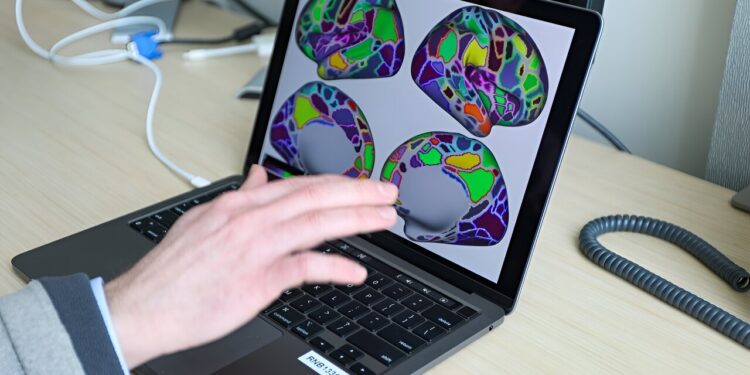An OHSU-led study used neuroimaging to confirm the widespread effects of ADHD on the brain. Credit: OHSU/Christine Torres Hicks
Researchers from Oregon Health and Science University and the University of Minnesota Masonic Institute for Brain Development leveraged a large national dataset and neuroimaging to confirm the effects at attention deficit hyperactivity disorder, or ADHD, brain scale.
The study, published in the Journal of Neurosciencefurther unveils the complex relationship between brain connectivity and behavioral disorders.
“Our group at OHSU is very interested in identifying risk factors for ADHD so that we can improve the assessment of children who may be living with this disorder,” said Michael A. Mooney, Ph.D., assistant professor. medical informatics and clinical epidemiology. in the OHSU School of Medicine, professor in the OHSU Center for Mental Health Innovation, and corresponding author of the study.
“By assessing the cumulative effects of whole-brain regions, we now view ADHD as a whole-brain problem, which could make it easier to predict which children have ADHD and its severity,” Mooney continued . “Ultimately, we hope this will contribute to the early identification of children most at risk, so they can get the help they need as quickly as possible.”
ADHD is a common neurodevelopmental disorder affecting approximately 3.5% of people in the United States and characterized by cognitive, behavioral, and emotional differences. In children, this can lead to difficulty paying attention and controlling impulsive behaviors, which can lead to difficulty at school, at home, and with peers.
Currently, there is no single, universal test to predict or diagnose children with ADHD; Typically, a medical provider will make a diagnosis based on a physical examination, medical history, and assessment of the child’s symptoms.
Previous studies have often examined whether children with ADHD have differences in specific networks or areas of the brain. However, this study aimed to challenge this method. In the study, researchers were able to confirm, through analysis of neuroimaging data, that there are cumulative brain-wide effects of ADHD, requiring a comprehensive approach to research, diagnosis and treatment. ADHD treatment.
Brain-wide signal
The study leveraged the data set from the Adolescent Brain Cognitive Development Study, or ABCD, a groundbreaking study of nearly 12,000 children ages 9 and 10 that maps behavioral, social, and brain development across a period of 10 years.
With this dataset, researchers used neuroimaging data to construct a polyneuro risk score, or PNRS, a method that calculates the likelihood of a health problem based on a patient’s brain activity, or specifically brain connectivity, which is the correlation of activity between several different brain regions.
The PNRS method consists of two steps. First, a dataset is used to identify a brain-wide connectivity pattern associated with a particular trait; in this case, ADHD symptoms. Then, a second dataset is used to validate whether this connectivity model actually predicts the trait. Participants with brain activity very similar to the previously identified pattern receive a higher score, while those who are less similar receive a lower score.
The association between PNRS and ADHD symptoms was tested in a subset of the ABCD study group and then further tested in the independent Oregon-ADHD-1000 case-control study group. In both groups, results suggest a robust association between brain-wide connectivity and ADHD symptoms.
“This is exciting because most previous research has focused on individual regions of the brain, but our study showed that this is not the case across the board,” Mooney said. “In fact, all areas of the brain emit signals that contribute to ADHD risk.”
Looking ahead, researchers will study whether these findings are consistent at different ages and times in the child’s life. In addition, researchers are interested in the application of the PNRS method to predict the risk of other neurological disorders, such as depression or anxiety.
“At this stage of the research, we are still evaluating the clinical utility of these findings. However, it certainly suggests not looking at behavioral conditions in silos,” Mooney said.
“Our hope is to continue research in this area so that in the future we can improve the method to a point where it could actually be used in healthcare settings, thus providing prediction and evaluation ADHD risks.”
More information:
Michael A. Mooney et al, Cumulative effects of resting-state connectivity across brain networks significantly correlate with ADHD symptoms, The Journal of Neuroscience (2024). DOI: 10.1523/JNEUROSCI.1202-23.2023
Provided by Oregon Health and Science University
Quote: Using neuroimaging, researchers confirm cumulative brain-wide effects of ADHD (January 31, 2024) retrieved January 31, 2024 from
This document is subject to copyright. Except for fair use for private study or research purposes, no part may be reproduced without written permission. The content is provided for information only.



